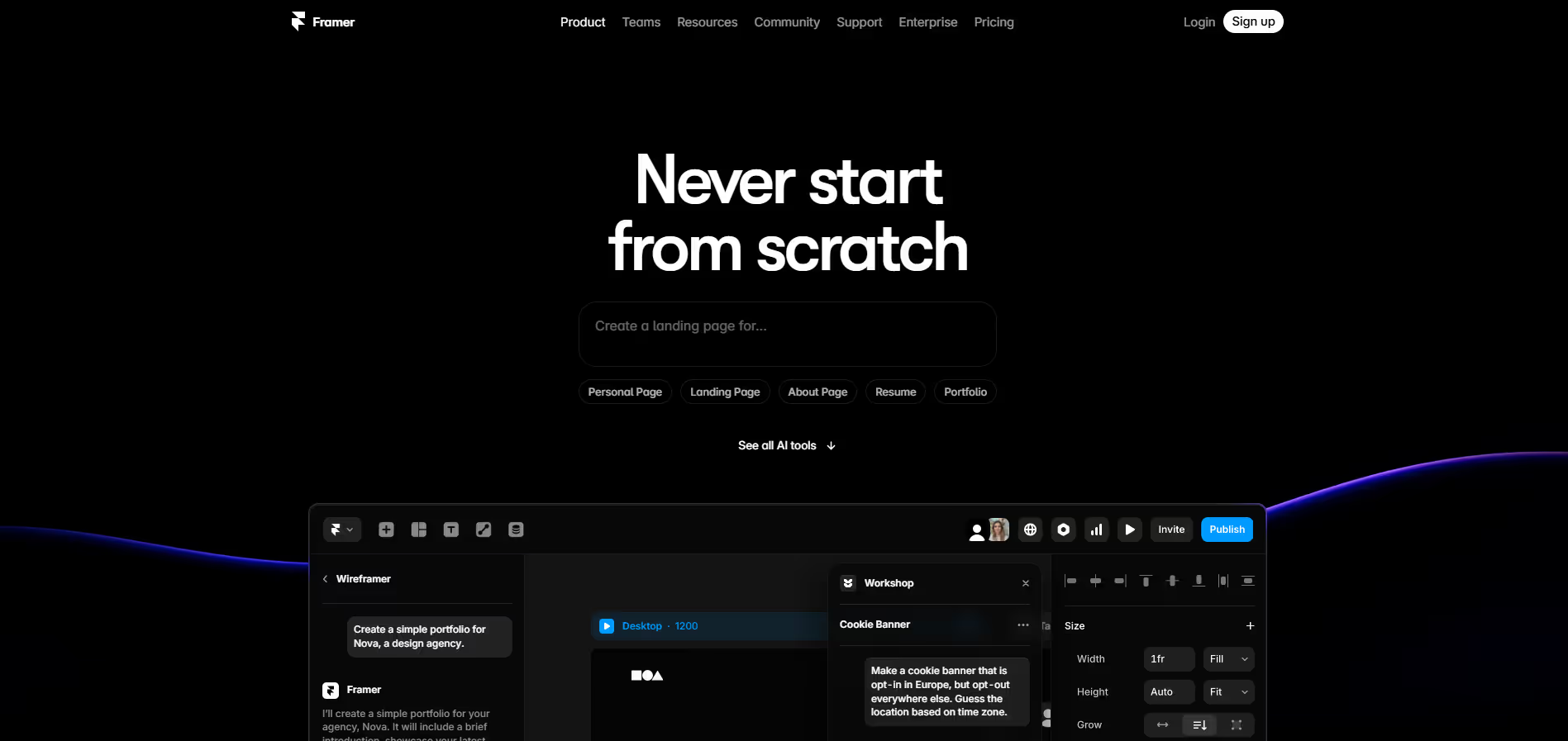Tool Insights
Home > Tools > Tool Details
Framer (AI)
Description
AI-powered website builder with drag-and-drop design, responsive layouts, and modern CMS tools.
Framer (AI) is a modern web design platform that blends visual design and website building. It lets users start from templates, wireframes, or AI-assisted layouts, then adjust content, responsive behavior, interactions, and publish directly. It includes built-in hosting, SEO features, content management (CMS), version history, collaboration tools, and domain support. Because of its strong design workflow—importing from Figma, custom components, previewing responsive behavior—Framer appeals to designers, small agencies, startups, and creators who want design control plus a publishing pipeline. AI helps speed up layout suggestions and design tweaks. The platform scales: from personal/hobby sites to professional sites with high traffic and advanced localization or performance needs
Key Applications
- Building portfolios, landing pages, and static sites fast using templates and AI-assisted design.
- Creating marketing sites with custom CMS content, site search, and responsive behavior.
- Team collaboration: multiple editors, roles/permissions, staging environments to preview changes safely.
- Internationalization and localization for sites targeting multiple regions and languages.
Who It’s For
Framer is for designers, freelancers, small agency teams, and startups who need to move fast while keeping design quality. It’s very helpful for those who want both visual control (animations, interactions, responsive layout) and built-in publishing/hosting infrastructure. If you’re tired of handoffs between design tools and developers, Framer can shrink that gap. Those needing custom backend logic, heavy ecommerce, or very large localized content should check plan limits carefully.
Pros & Cons
How It Compares
- Versus traditional web dev + CMS (e.g. hand-coding WordPress): much faster setup, less maintenance, integrated hosting.
- Versus simpler website builders (Squarespace, Wix): more design flexibility, better animation/interactions, built-in CMS, responsive control.
- Versus design-only tools (like Figma): offers real publication, hosting, SEO, and live websites rather than just mockups.
Bullet Point Features
- AI-assisted layouts and wireframing, template library.
- Built-in CMS collections, content editing, site search, domain connection.
- Collaboration tools: staging, version history, roles/permissions.
- Localization / multiple locales, analytics, advanced hosting/CDN options on higher plans.
Disclosure
All product names, logos and brands are property of their respective owners. Use is for educational and informational purposes only and does not imply endorsement. Links are to third-party sites not affiliated with Barndoor AI. Please see our Terms & Conditions for additional information.



.avif)




